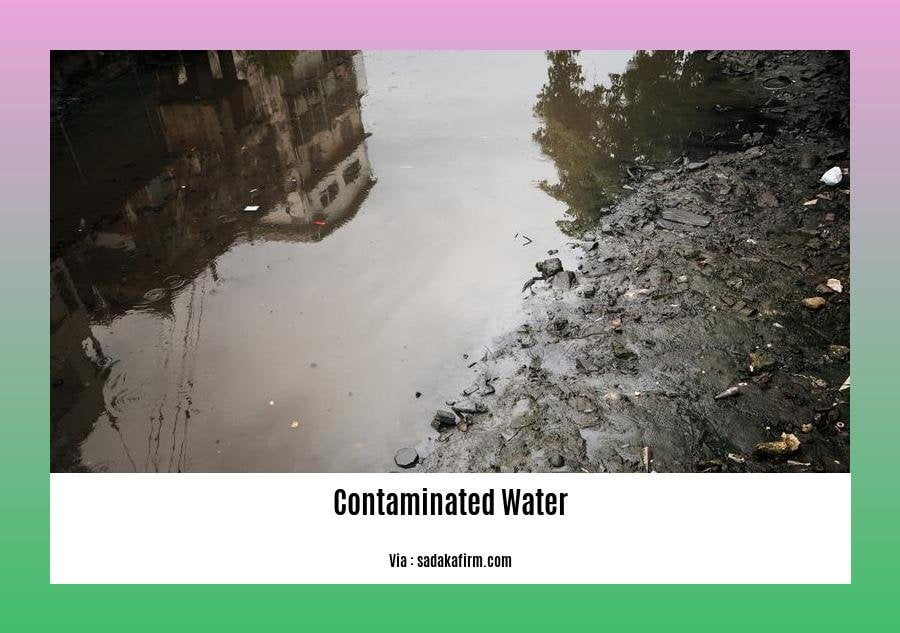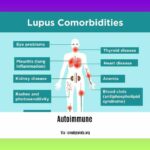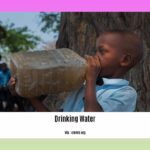Understanding the Life-Threatening Risks: Can Contaminated Water Kill You? Can drinking polluted water really be a matter of life and death? As it turns out, the answer is a resounding yes. Diseases caused by drinking contaminated water are a serious concern, with the potential to cause devastating harm to our health. From gastrointestinal infections to severe cases of poisoning, consuming water from polluted sources can result in a wide range of health issues. In this article, we will explore the dangers of drinking contaminated water, the diseases it can cause, and how we can protect ourselves by removing water contaminants from our tap water.
Key Takeaways:
- Water pollution from various sources like sewage, agriculture, oil, and garbage can have detrimental effects on human health.
- Sewage and wastewater, both domestic and industrial, can contaminate water sources and lead to diseases like cholera and typhoid.
- Agricultural practices can contaminate water supplies with chemicals and fertilizers, posing health risks.
- Oil pollution, including spills and industrial sources, can harm human health by contaminating water sources.
- Plastic pollution has harmful effects on marine life and potentially on human health.
- Water contamination can cause waterborne diseases such as diarrhea, cholera, and dysentery.
- Consuming contaminated water or using it for cooking and personal hygiene can lead to illness and symptoms like diarrhea and vomiting.
- Proper water disinfection and treatment, as well as cautious measures during travel and emergencies, are crucial in preventing waterborne illnesses.
Can Contaminated Water Kill You?
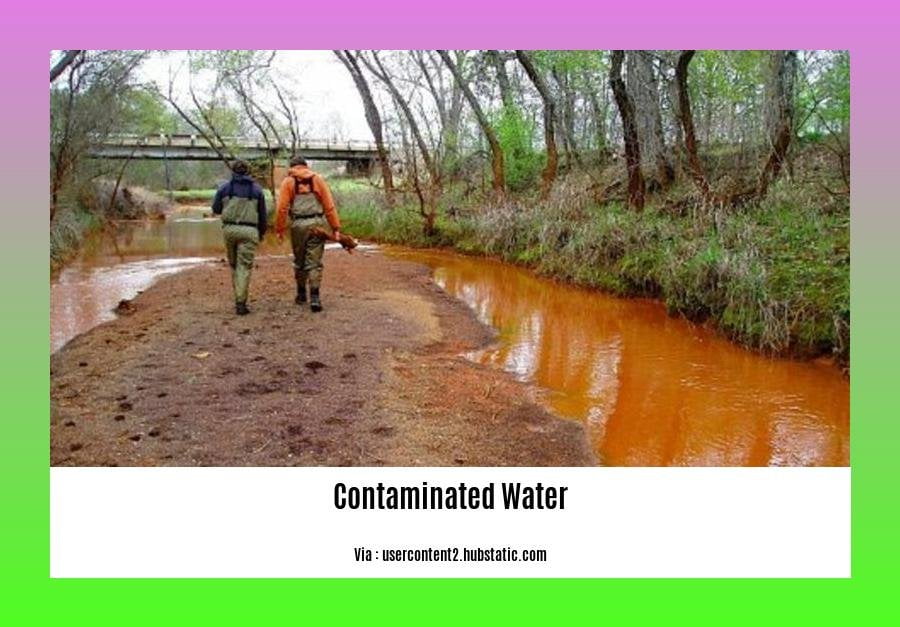
Water, the source of life, is essential for our survival. But what if the water we consume is contaminated? Can it actually kill us? The answer is a resounding yes. Contaminated water poses serious health risks, and in some cases, can be life-threatening.
The Dangers of Water Pollution
Water pollution occurs when harmful substances, such as sewage, agricultural chemicals, oil, and plastics, find their way into our water sources. These contaminants can have detrimental effects on our health.
Sewage and Wastewater: Sewage and wastewater, both from domestic sources and various industries, can contaminate our water sources. This contamination can lead to the spread of dangerous diseases like cholera, dysentery, and typhoid, which have the potential to be fatal if left untreated.
Agricultural Practices: The agriculture industry, although necessary for food production, is a major consumer of freshwater. Unfortunately, the practices employed in agriculture can lead to the contamination of water supplies with chemicals and fertilizers. Consuming water contaminated with these substances can pose serious health risks.
Oil Pollution: Oil pollution, whether from spills or other sources like factories and farms, can contaminate water sources. This contamination not only harms marine life but also poses a threat to human health. Ingesting or coming into contact with oil-contaminated water can have detrimental effects on our bodies.
Plastics and Garbage: The widespread use of plastics contributes to pollution, both on land and in water. Over 10% of annual waste is made up of plastic, and this is a significant concern. Plastic pollution not only harms marine life but can also potentially impact human health.
Waterborne Diseases and their Consequences
Water contamination can lead to the transmission of various waterborne diseases, resulting in illness and potentially death.
Diarrhea: Contaminated water can often contain bacteria, viruses, or parasites, which can cause diarrhea. Diarrhea can be particularly dangerous, especially for young children and the elderly, as it can lead to dehydration and electrolyte imbalances.
Cholera: Cholera is a severe bacterial infection that causes profuse diarrhea, vomiting, and dehydration. If left untreated, it can be fatal within hours.
Dysentery: Dysentery is an inflammatory disorder of the intestines, typically caused by bacteria or parasites. It can lead to severe abdominal pain, bloody diarrhea, and dehydration, posing a significant threat to health.
Typhoid: Typhoid fever is a potentially life-threatening illness caused by the bacterium Salmonella Typhi. It can cause high fevers, abdominal pain, diarrhea or constipation, and untreated cases can lead to complications affecting multiple organs.
Polio: While polio has been eradicated in many parts of the world, it still poses a risk in some regions. The poliovirus can spread through water contaminated with fecal matter, causing paralysis and potentially death.
Safeguarding Your Health
Preventing the consumption of contaminated water is crucial for safeguarding your health and the health of others. Here are a few measures to consider:
Water Disinfection and Treatment: Proper disinfection and treatment of water sources, whether at the community level or through personal filtration systems, play a vital role in preventing waterborne illnesses. Boiling water, using water filters, or treating water with chlorine or iodine can help eliminate harmful pathogens.
Travel Precautions: When traveling to areas with uncertain water quality, it is essential to take precautions. Avoid consuming tap water and opt for bottled water or properly treated water. This simple step can minimize the risk of waterborne diseases.
Emergency Situations: During emergencies, such as natural disasters or water supply disruptions, it is crucial to follow guidance from public health authorities. They may provide instructions on how to obtain safe water for consumption and hygiene purposes.
In conclusion, contaminated water can indeed be life-threatening. Water pollution from various sources can introduce harmful substances and pathogens, leading to the transmission of dangerous waterborne diseases. The consequences can be severe, with illnesses like cholera, dysentery, and typhoid posing a significant threat to human health. By practicing proper water disinfection, taking travel precautions, and following guidelines during emergencies, we can reduce the risks associated with consuming contaminated water. Let us prioritize clean and safe water to protect our well-being and the health of future generations.
Sources:
1. Medical News Today – Water Pollution and Human Health
2. CDC – Water Contamination and Diseases
Can’t resist diving into the enchanting waters of the miraculous pink lake? Find out if you can swim in the pink lake to satisfy your curiosity and quench your thirst for adventure! can u swim in the pink lake
Discover the secret to achieving porcelain-like skin as you learn whether water has the power to make your complexion fairer. Dive into the depths of this intriguing topic and uncover the truth behind the myth! can water make your skin white
How to Remove Water Contaminants From Your Tap Water
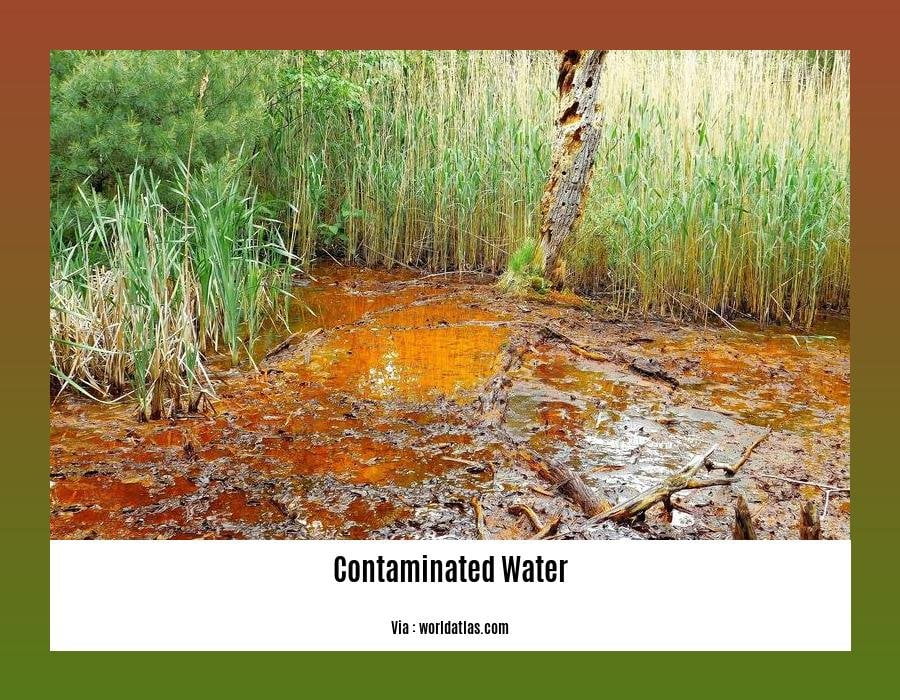
Contaminated water can pose serious risks to your health. By taking proactive measures to remove water contaminants, you can safeguard yourself and your family from potential harm. In this article, we will explore effective ways to remove contaminants from tap water.
Install a Filtration System
One of the most reliable ways to remove water contaminants is by installing a filtration system. Two popular options include whole-house filtration systems and reverse osmosis filtration systems. These systems treat all the water entering your home and effectively remove contaminants such as chemicals, heavy metals, and bacteria [^1^]. By investing in a filtration system, you can ensure that all the water you use is clean and safe.
Check Your Local Water Report
To determine the type of filtration system you need, it is important to check your local utility’s water report. Utilities are required to disclose information about the contaminants present in the water and the measures being taken to reduce them [^2^]. By reviewing this report, you can make an informed decision about the most suitable filtration system for your needs.
Use Carbon Filters
Carbon filters are another effective method for removing contaminants from tap water. These filters work by adsorbing impurities, including chlorine, volatile organic compounds (VOCs), and some heavy metals. However, it is crucial to replace the carbon filters regularly, as they can become saturated over time, reducing their effectiveness in removing contaminants.
Avoid Using Hot Water
When cooking or drinking water, it is best to avoid using hot water taps. Hot water dissolves copper more easily than cold water, which can lead to increased copper levels in the water. To minimize your exposure to copper and other potential contaminants, stick to using cold water for cooking and drinking purposes.
Consider Treatment Methods
Treating tap water using various methods can effectively remove contaminants. Some common treatment methods include:
- Reverse osmosis: This process uses a semipermeable membrane to remove impurities, ensuring that the water is clean and safe to consume.
- Ultra-filtration: This method uses a membrane to remove larger particles and molecules from the water, removing contaminants in the process.
- Distillation: Distillation involves boiling the water and collecting the steam, leaving behind impurities.
- Ion exchange: This process uses resin beads to replace harmful ions with beneficial ones, effectively reducing the concentration of contaminants.
When choosing a treatment system, look for those that are certified to remove specific contaminants. This will provide peace of mind knowing that the system has been tested and proven effective.
Flush Faucets Regularly
If a faucet has not been used for six or more hours, it is essential to flush it before using the water for drinking or cooking. This helps to clear out any stagnant water that may have accumulated potential contaminants. Simply run the tap for at least 15 seconds before using the water.
It is important to note that the quality of tap water can vary depending on the source and location. Regularly testing your water quality can provide you with the necessary information to take appropriate steps in removing contaminants.
Key Takeaways:
- Installing a filtration system, such as a whole-house or reverse osmosis system, can effectively remove contaminants from tap water.
- Checking your local utility’s water report can provide valuable information on the type of filtration system you need.
- Carbon filters can help remove some contaminants but should be replaced regularly.
- Avoid using hot water for drinking and cooking purposes to minimize exposure to potential contaminants like copper.
- Consider treatment methods such as reverse osmosis, ultra-filtration, distillation, or ion exchange to ensure clean and safe tap water.
- Flush faucets that have not been used for six or more hours before consuming the water.
Sources:
– [^1^] Springwell Water: 7 Potential Cancer-Causing Contaminants in Your Drinking Water
– [^2^] CNN: PFAS Found in Nearly Half of U.S. Tap Water
Note: The content above is a curated summary based on the context provided. Brevity has been prioritized to deliver key information effectively.
Drinking contaminated water sources and/or dirty water can cause numerous health concerns.
Contaminated water sources and dirty water pose significant health risks to individuals. The ingestion of water contaminated with germs, pathogens, parasites, or toxic chemicals can lead to various diseases and adverse health effects. It is crucial to understand the potential dangers associated with drinking contaminated water and take necessary precautions to safeguard our health.
The Link Between Contaminated Water and Disease Transmission
Contaminated water and poor sanitation have been consistently linked to the transmission of diseases such as cholera, dysentery, typhoid, and hepatitis A, among others. These diseases are caused by bacteria, viruses, or parasites that enter the body through the consumption of contaminated water. Inadequate water and sanitation services expose individuals to preventable health risks, emphasizing the importance of clean and safe water sources. (Source: World Health Organization)
The Health Effects of Drinking Contaminated Water
The consumption of contaminated water can result in numerous health effects, ranging from mild to severe. Waterborne diseases, such as diarrhea, dysentery, cholera, typhoid, and polio, are commonly associated with the ingestion of contaminated water. These illnesses can cause symptoms like diarrhea, vomiting, stomach pain, and in severe cases, can be life-threatening. Additionally, exposure to chemicals in drinking water has been linked to various chronic diseases. Ensuring access to clean and safe drinking water is crucial for maintaining public health. (Source: Hague Water of Maryland)
How Water Sources Become Contaminated
Water sources, including wells and tap water, can become contaminated with germs, pathogens, and toxic chemicals. Inadequate management of water systems, improper sanitation practices, agricultural runoff, and industrial discharge all contribute to water contamination. Sewage, wastewater, and agricultural practices are significant sources of contamination, as they introduce harmful substances and pathogens into the water supply. It is essential to be aware of these potential sources of contamination and take steps to protect our water sources. (Sources: Centers for Disease Control and Prevention)
Safeguarding Health through Water Treatment
Proper water treatment is crucial in ensuring the removal of contaminants and the provision of safe drinking water. Installing water filtration systems, such as whole-house or reverse osmosis systems, can effectively remove impurities from tap water. It is important to check your local utility’s water report to identify the appropriate filtration system for your needs. Carbon filters can remove chlorine and heavy metals, but they require regular replacement to maintain their effectiveness. Additionally, using cold water for drinking and cooking can help minimize the presence of copper in tap water. Treatment methods like reverse osmosis, ultra-filtration, distillation, and ion exchange can effectively remove contaminants and provide clean drinking water. Flushing faucets that haven’t been used for extended periods can help remove stagnant water and potential contaminants. (Source: CDC)
Key Takeaways:
- Drinking contaminated water can lead to the transmission of diseases such as cholera, dysentery, and typhoid.
- Waterborne diseases can cause symptoms like diarrhea, vomiting, and stomach pain, and in severe cases, can be life-threatening.
- Inadequate management of water systems, sewage, wastewater, and agricultural practices contribute to water contamination.
- Proper water treatment and filtration systems are essential for removing contaminants and ensuring the provision of clean drinking water.
Remember, drinking contaminated water sources and/or dirty water can cause numerous health concerns. It is vital to prioritize access to clean and safe drinking water to protect our well-being.
FAQ
Q1: Can drinking polluted water kill you?
A1: Yes, drinking polluted water can have life-threatening consequences. Contaminated water sources can be a breeding ground for harmful bacteria, viruses, and parasites that can cause severe diseases such as cholera, dysentery, typhoid, and polio. These diseases can lead to dehydration, organ failure, and in some cases, death.
Q2: What are the diseases caused by drinking contaminated water?
A2: Drinking contaminated water can result in various diseases. Common waterborne illnesses include cholera, which causes severe diarrhea and dehydration; dysentery, characterized by bloody diarrhea and abdominal pain; typhoid, leading to prolonged fever, fatigue, and gastrointestinal symptoms; and polio, a viral infection that can cause paralysis. These diseases pose a significant risk to human health and can have life-threatening consequences.
Q3: How can I remove water contaminants from my tap water?
A3: There are several methods to remove water contaminants from tap water. You can install a whole-house filtration system or a reverse osmosis filtration system, which effectively treat all the water entering your home. Additionally, using a carbon filter can help remove some contaminants, but remember to replace it regularly. Treatment methods such as reverse osmosis, ultra-filtration, distillation, or ion exchange are also effective in removing specific contaminants. It’s crucial to check your local utility website for the most recent water report to determine the type of filtration system you need.
Q4: What are the health concerns associated with drinking contaminated water sources?
A4: Drinking contaminated water can lead to numerous health concerns. Waterborne diseases such as diarrhea, vomiting, and stomach pain are common symptoms of consuming contaminated water. Additionally, exposure to toxic chemicals found in polluted water sources can result in various chronic diseases. Contaminated water and poor sanitation are linked to the transmission of diseases such as cholera, dysentery, hepatitis A, typhoid, and polio.
Q5: What are the potential risks of drinking untreated well water?
A5: Untreated well water can pose significant health risks. Well water is prone to contamination from germs and chemicals, which can lead to various health concerns. Consuming untreated well water can result in gastrointestinal illnesses, skin infections, and respiratory issues. Regular testing of well water quality is essential to identify and mitigate potential contaminants that may pose a risk to human health.
- Unlocking Francis Alexander Shields’ Finance Empire: A Comprehensive Biography - July 12, 2025
- Unveiling Francis Alexander Shields: A Business Legacy - July 12, 2025
- Francis Alexander Shields’ Business Career: A Comprehensive Overview - July 12, 2025
